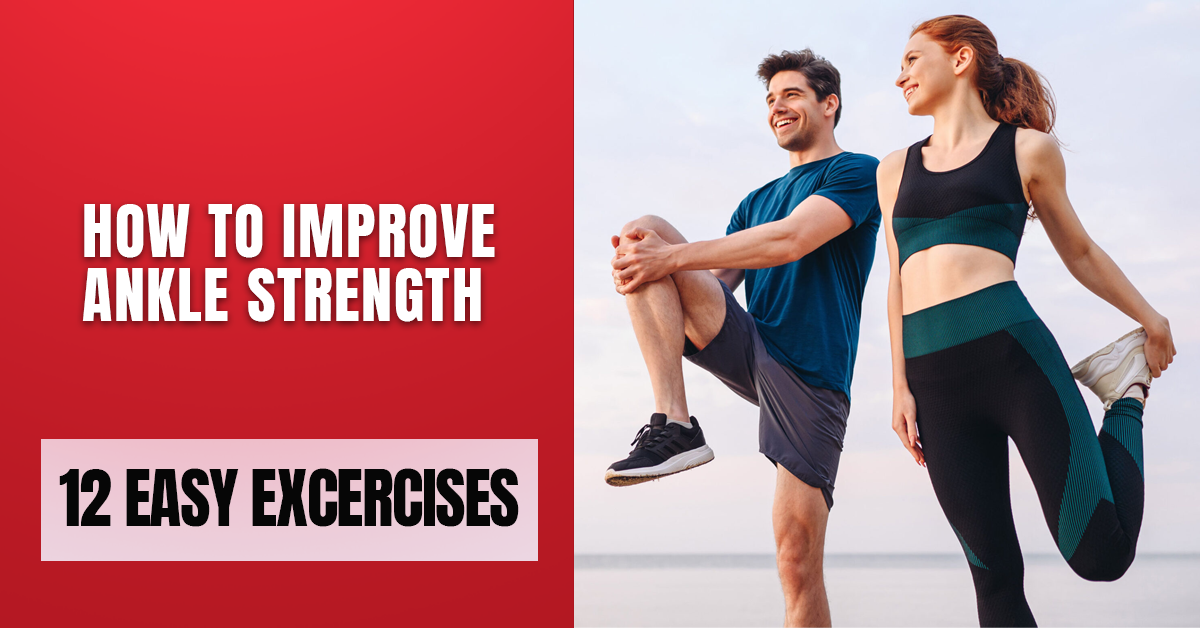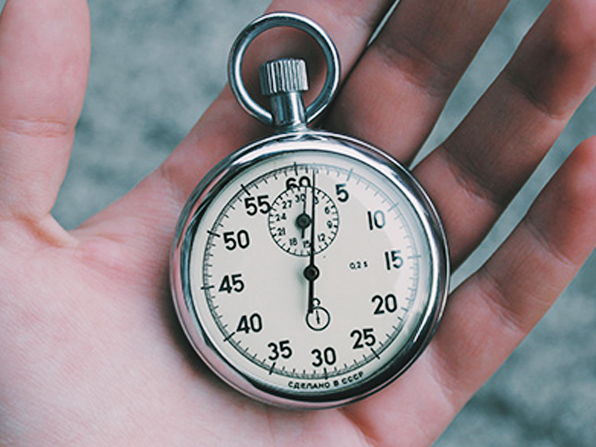
Hey there! Let's chat about ankle strength…Something that plays a huge role in our everyday lives.
Whether walking to the kitchen, running to catch a bus, jumping for a rebound in basketball, or standing in line at the grocery store…Your ankles always work.
They keep you balanced and moving. With strong and flexible ankles, you have a bigger range of motion. Weak ankles, on the other hand, cause poor ankle mobility.
Yet, we never give them a second thought until they start to hurt. One wrong step or a little twist, and suddenly, we realize how important our ankles are.
We must think about how to improve ankle strength before it's too late.
It's better to give your ankles some love before they demand it, right? After all, they’re there for you every step of the way…Literally!
So, here is what we're going to cover:
We will quickly go through the ankle muscles, the importance of strong ankles, and the role of proprioception. And then, wrap up with 12 simple but effective ankle strengthening exercises.
What Are the Key Muscles in the Ankle?
Your ankles are powered by a whole team of muscles working together to keep you moving smoothly and securely. Some key players include the gastrocnemius, soleus, and posterior tibialis, among others.
Each muscle has a specific role in moving and stabilizing your ankles. They're like a well-coordinated dance troupe. When one muscle contracts to move your ankle, the others adjust to maintain balance and control.
Why is Ankle Strength Important?
When your ankles are strong and stable, they help you avoid pesky sprains, strains, and other injuries that can throw off your routine. The ankles are a crucial part of the kinetic chain – the system that keeps our movements smooth and efficient, says Brett Warner, P.T., D.P.T., C.S.C.S. of Bespoke Treatments.
Simply put, your ankles are like the sturdy base of a skyscraper. When that base is strong, everything above it is solid and secure. But if it’s weak, the whole structure is at risk.
Strong ankles mean a strong foundation. And that means you can keep doing the things you love…Hitting the gym, playing sports, or simply staying active in your day-to-day life.
Just like your ankles need support, so do your joints, skin, and overall health.
Consider adding BELDT Labs Bedrock Series Collagen Peptides to your daily routine. It’s an easy way to strengthen your body's essential building blocks, helping you stay active and resilient as you age.
What is the Role of Ankle Proprioception?
Proprioception is a word with a significant meaning. It’s your body’s ability to sense where you are in space, whether standing on solid ground, walking on a bumpy trail, or balancing on one leg.
It's the built-in GPS we are born with. The system that constantly tracks your movements and helps you navigate the world around you. That’s the role of ankle proprioception in a nutshell.
The better your proprioception, the more seamlessly your brain and body can communicate.
So, you need to work on strengthening ankle muscles not just to prevent injuries…But to keep this internal GPS in check.
And now, here is what you can add to your exercise routine.
12 Easy Ankle Strengthening Exercises
These exercises will help you build strength and improve proprioception to avoid ankle injury. You can do them at the beginning or end of your workout, and the best part is they don’t take much time.
Before we dive in, we'd like to note that…If any of these movements cause pain, you should stop and consult with a physical therapist.
1. Eccentric Dorsiflexion: 3 rounds of 15 reps
How to Do It: Sit comfortably in a chair and prop your feet up on a stool or something similar. Let your toes dangle off the edge.
Movement: Slowly lower your toes towards the ground over 5 seconds, then lift them back up towards your shins in 2 seconds.
Tip: If you want to make it more challenging, place a resistance band over your toes or hold a lightweight one.
2. Resisted Ankle Eversion & Inversion: 2 to 3 sets of 10 to 15 reps on each side
How to Do It: Grab a resistance band and loop it around your foot.
Movement: Rotate your foot inward and then outward against the band's resistance, focusing on controlled movement.
Tip: Keep your knee steady; let your foot do all the work.
3. Standing Heel Raises: 2 to 3 sets of 10 reps
How to Do It: Stand with your feet about hip-width apart.
Movement: Slowly rise up onto your toes, lift your heels off the ground, then gradually lower back down.
Tip: Stay in control the entire time—avoid dropping your heels too quickly.
4. Single-leg balance with Rotation: 2 sets of 60 seconds on each side
How to Do It: Stand on one foot, bringing the opposite knee up to hip height.
Movement: Slowly rotate your knee to the side and back to the center while maintaining your balance.
Tip: Focus on a fixed point in front of you to help keep your balance.
5. Single-Leg Balance on an Unstable Surface: 2 sets of 30 seconds on each side
How to Do It: Stand on one foot on a foam pad or Bosu ball.
Movement: Try to keep your balance for 30 seconds.
Tip: If this feels easy, close your eyes or add light arm movements to increase the challenge.
6. Lateral Step Downs: 3 sets of 12 reps on each side
How to Do It: Stand on the edge of a box or step with one foot, letting the other hang off.
Movement: Slowly lower your hanging foot to the ground by bending the knee of the standing leg, then push through your heel to stand back up.
Tip: Keep your knee aligned with your toes to avoid any twisting.
7. Star Exercise: 5 reps on each leg
How to Do It: Set up a few cones or markers in a star shape around you.
Movement: Balance on one foot and use the other foot to tap each cone, one at a time, while keeping your balance.
Tip: The key here is to move slowly and focus on maintaining your stability.
8. Squats on a Balance Board: 2 to 3 sets of 10 reps
How to Do It: Stand on a balance board or wobble board.
Movement: Perform a squat, going as low as comfortable while keeping the board stable.
Tip: The goal is to keep the board from tipping to either side as you squat.
9. Double-Leg Pogo Hops: 3 sets of 20 seconds
How to Do It: Stand with both feet together.
Movement: Jump up and down in place as quickly as you can, focusing on landing softly on the balls of your feet.
Tip: Keep your knees slightly bent and gently bounce to stay light on your feet.
10. Single-Leg Pogo Hops: 3 sets of 10 to 15 seconds per side
How to Do It: Stand on one leg.
Movement: Perform small hops in place, staying on the ball of your foot, and keep your heel off the ground.
Tip: Start with a slight bend in your knee and use your ankle to control the movement.
11. Squat Jumps
How to Do It: Stand with feet hip-width apart.
Movement: Squat down, then jump up explosively, landing softly and immediately lowering into the next squat.
Tip: Focus on landing on the balls of your feet and absorbing the impact through your legs.
12. Single-Leg Lateral Jumps: 2 rounds of 60 seconds on each side
How to Do It: Stand on one leg.
Movement: Hop side-to-side on your standing leg, landing softly each time.
Tip: Bend your knee slightly as you land to keep your balance and protect your joints.
Our Last Thoughts
As you can see, these are straightforward, easy exercises. When done regularly, they can make a big difference in how strong and stable your ankles feel.
Whether you’re a seasoned athlete or just someone looking to stay active…Enhancing the communication between your brain and body is crucial, and proper nutrition plays a big role.
PRIZM: SUPER SPECTRUM MULTIVITAMIN provides the right kind of nutrients that your muscles need to stay strong and responsive.
The above exercises, combined with the unique formula of PRIZM, are a great addition to your routine!




